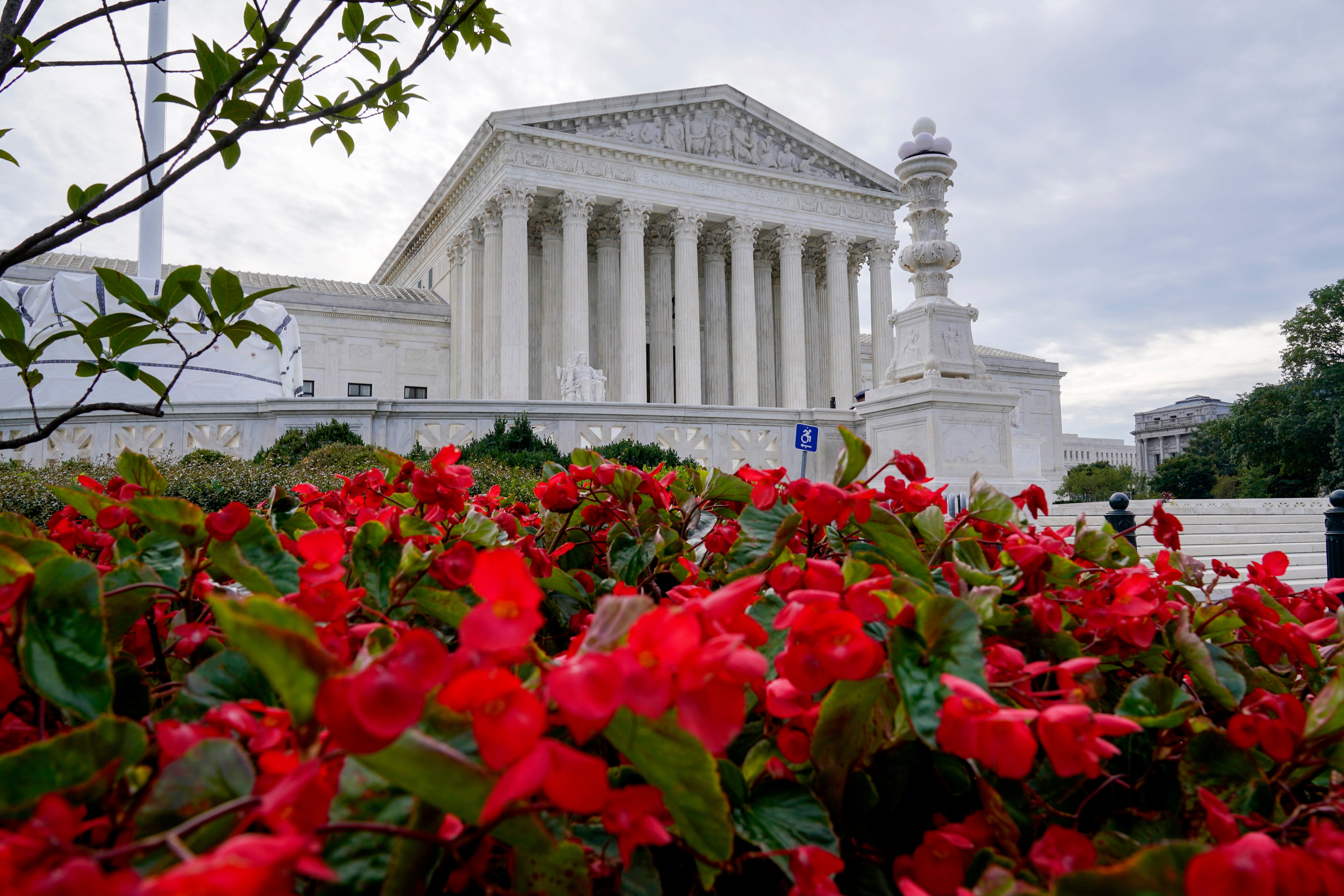SUPREME COURT NOTEBOOK: Don't stand so close to us
Get tested

Your support helps us to tell the story
From reproductive rights to climate change to Big Tech, The Independent is on the ground when the story is developing. Whether it's investigating the financials of Elon Musk's pro-Trump PAC or producing our latest documentary, 'The A Word', which shines a light on the American women fighting for reproductive rights, we know how important it is to parse out the facts from the messaging.
At such a critical moment in US history, we need reporters on the ground. Your donation allows us to keep sending journalists to speak to both sides of the story.
The Independent is trusted by Americans across the entire political spectrum. And unlike many other quality news outlets, we choose not to lock Americans out of our reporting and analysis with paywalls. We believe quality journalism should be available to everyone, paid for by those who can afford it.
Your support makes all the difference.Get tested. Wear a mask. Don't get too close. Not your typical court orders, but that was the word from the Supreme Court to lawyers and reporters who returned to the high court this week for the first in-person arguments in more than a year and a half.
The justices are no longer hearing arguments by phone. But reminders that the coronavirus pandemic is ongoing were everywhere, from the absence of Justice Brett Kavanaugh after a positive coronavirus test to social distancing measures in the courtroom, although only Justice Sonia Sotomayor who has diabetes, wore a mask among the fully vaccinated justices.
The lectern that lawyers have said is close enough to the justices to see the whites of their eyes has been pushed back a few feet. Lawyer David Frederick said the change made it easier to see the whole bench without having to turn his head, but detracted from “the intimacy of having a conversation with the justices.”
Reporters, normally packed into three rows with a view of both the justices and the lawyers, were spread out in the courtroom in seats usually occupied by members of the public. The building remains closed to visitors. Between the reporters attending and the justices' clerks, the audience that can normally number several hundred was roughly 50 for each of the arguments.
Despite transcontinental travel and a three-hour time change, California-based lawyer Jeffrey Fisher was thrilled to be back at the court arguing in person Tuesday after doing it by telephone five times during the pandemic. The arguments were more free-flowing than they were over the phone, and there's no substitute for seeing how the justices react to an argument, Fisher said.
Fisher was arguing that New York violated his client's right to cross-examine a witness for the prosecution.
One exchange in that case, involving Gina Mignola of the Bronx district attorney's office and Justice Stephen Breyer exemplified the power of visual cues.
“I see that you doubt what I’m saying there, Justice Breyer,” Mignola said, interrupting her answer after seeing Breyer visibly react to what she was saying.
Breyer said, “No, I’m not doubting it. I just want you to explain it,” Breyer said.
“Yes, you’re hoping that I’ll explain it better,” Mignola replied.
Breyer readily agreed: “Yeah.”
___
TALKATIVE THOMAS
In the “before” times, Justice Clarence Thomas would go years between asking questions at Supreme Court arguments, and when he did chime in, it was generally after everyone else was done.
But for the opening week of the term, Thomas got the first crack at the lawyers in each of the court's five cases. It appeared the other justices, who generally are not shy about jumping in, have agreed to let the court's longest-serving member go first.
In a case about when federal sentencing law should consider multiple break-ins on the same day at a mini storage facility one crime or several, Thomas pressed the defendant's lawyer on how much time has to lapse between break-ins to treat them as separate crimes.
“What if they said, look...we’ve got lots of time; we can go to Starbucks, grab...a cup of coffee or something like that, actually, Dunkin’ Donuts and get a cup of coffee or something? I mean -- and they stay for an hour or two. Is that enough of a break?” Thomas asked.
A day later, Thomas also asked Fisher a handful of questions.
“Tuesday was my 45th argument and the first time I've ever gotten a question from Justice Thomas in the courtroom,” Fisher said.
___
ARE YOU THERE, JUSTICE KAVANAUGH?
It's not clear whether Kavanaugh will be back at the court when the justices next hear arguments on Tuesday and Wednesday.
For the first week, his high-backed black chair at the left end of the bench sat empty.
At first, Kavanaugh had trouble cutting in, seeming to trip over other justices in trying to ask a question as his disembodied voice floated into the courtroom.
Things were soon working more smoothly later, however, and Kavanaugh's absence from the courtroom wasn't a factor in the flow of arguments.
___
NO LINES
Before the pandemic, the Supreme Court teemed with visitors on a typical day. They line up for coveted seats for arguments and courtroom tours when the justices aren't hearing cases. A line sometimes stretches outside the cafeteria, especially when a school group is in the building around lunchtime.
None of that happened last week, and there's no public date for reopening the building. So attendance in the courtroom was sparse, and the cafeteria, renovated during the pandemic, had plenty of “grab-and-go” meals as well as a brand-new espresso bar.
With the public absent, the court's halls are quieter. Another difference: no lines at the bathroom.